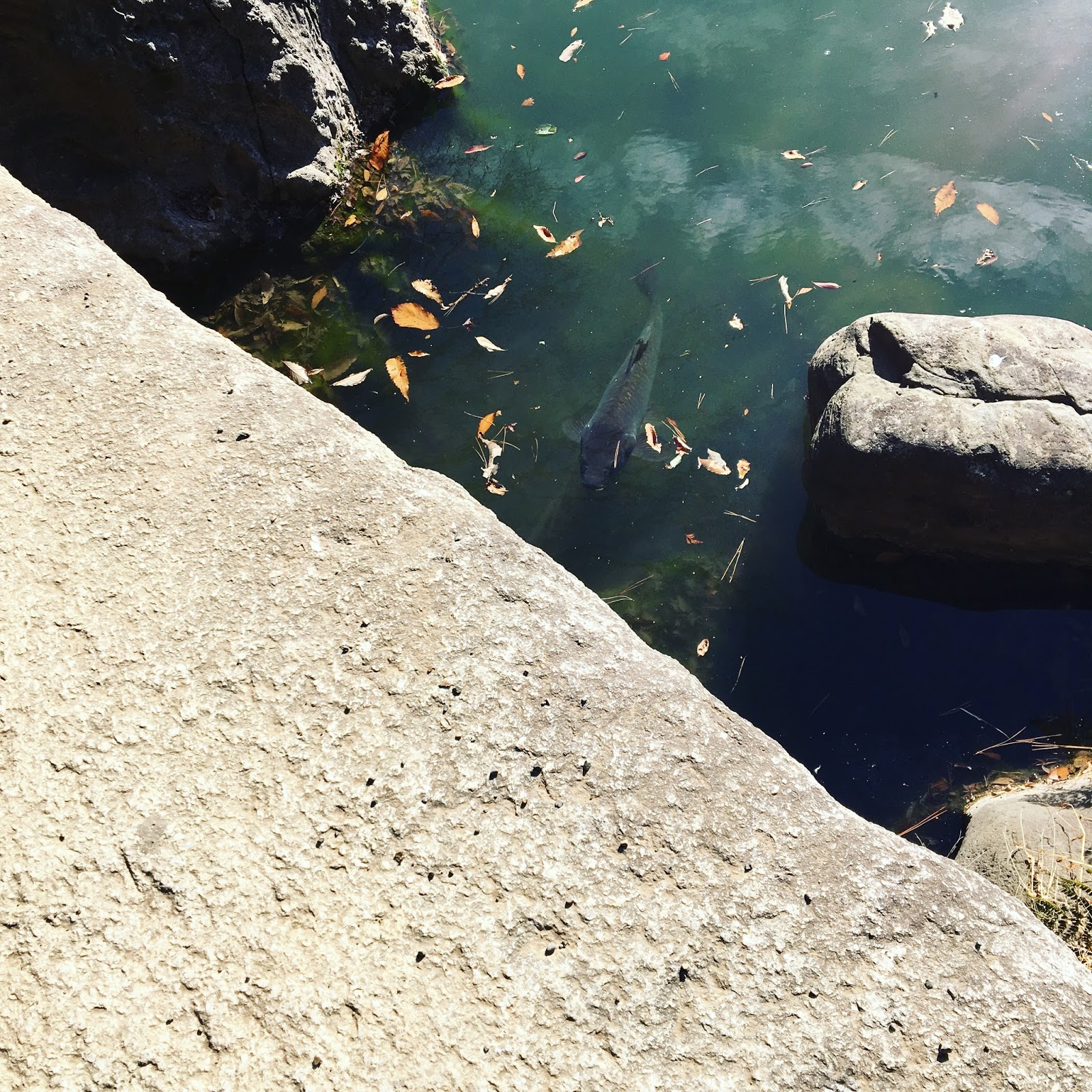If you ever travel to Tokyo, you will notice that, although it is a big, skyscraper stuffed city, the variety of parks and (japanese) gardens is amazing. There are nine Cultural Heritage Gardens. One of them are the Rikugien Gardens in Bunkyo-ku, which were originally constructed as a daimyo garden in 1702 in the kaiyu-style (circuit style).
Jeder der nach Tokio kommt, wird schnell feststellen, dass es dort, trotz der vielen überragenden Wolkenkratzer, eine erstaunlich große Auswahl an Parks und (japanischen) Gärten gibt. Es gibt neun Gärten, die als Kulturerbe ausgezeichnet sind. Einer davon ist der Rikugien Garten in Bunkyo-ku, der ursprünglich 1702 als Feudalgarten im kaiyu Stil (als Rundgang) angelegt wurde.
 |
| Entrance to the Rikugien Gardens |
 |
| In Bunkyo-ku |
The Rikugien Gardens are a great spot to relax and explore an authentic japanese garden with a lot of spiritual meanings, as there are four areas which are dedicated to different natural elements. Depending on the season, you can enjoy the changing flora. A special recommendation is the view from the Fujishiro-toge, the highest hill in the garden. You can not only enjoy the view over the garden, but also the contrast between city and nature with the skyline in the background.
Der Rikugien Garten ist ein perfekter Ort, um sich zu erholen und einen authentischen japanischen Garten mit einer besonderen, spirituellen Bedeutung zu erkunden, da es vier verschiedene Ebenen gibt, die natürlichen Elementen gewidmet sind. Je nach Jahreszeit kann man die wechselnde Pflanzenwelt bestaunen. Eine besondere Empfehlung ist die Aussicht vom Fujishiro-toge, dem höchsten Hügel des Gartens. Von dort aus kann man nicht nur die Aussicht über den Garten, sondern auch den Kontrast zwischen Stadt und Natur genießen, da die Skyline im Hintergrund in den Himmel ragt.
 |
| View from Fujishiro-toge |
The Rikugien Gardens are also a special place, because there are not so many tourists, when you arrive at the right time (mainly in the morning). There is also a guided tour in English with especially communicative tour guides who explain the meaning of Waka (和歌) poetry (classical Japanese literature) on which the garden's concept is based. The tour is twice from 11:00 to 14:00 on the first and third Sunday of every month. It takes about 60 minutes and is free. I highly recommend that you ask for 大森-san (Mr Ômori) who gave me a private tour in English and in German when he found out where I come from. He has been living in Germany for some time and is very interested in other cultures (especially the German culture)! His tour was absolutely amazing!
Der Rikugien Garten ist auch ein besonderer Ort, weil dort nicht so viele Touristen sind, wenn man zur richtigen Zeit ankommt (hauptsächlich vormittags). Es gibt außerdem eine Führung auf Englisch mit sehr redefreudigen Guides, die die Bedeutung der Waka (和歌) Dichtkunst (klassische japanische Literatur) erklären, nach der der Garten konzipiert ist. Die Führung findet zweimal zwischen 11:00 und 14:00 Uhr am ersten und dritten Sonntag jeden Monats statt. Sie dauert ungefähr 60 Minuten und ist kostenlos. Ich kann nur empfehlen, nach 大森-san (Herr Ômori) zu fragen, der mir eine Privatführung auf Englisch und auf Deutsch gab, nachdem er herausgefunden hat, woher ich komme. Er hat für einige Zeit in Deutschland gelebt und interessiert sich sehr für andere Kulturen (besonders für die deutsche Kultur)! Seine Führung war unglaublich toll!
 |
| A Special Pine Tree with a Straw-Wrap against Insects |
 |
| View over Daisensui Pond |
Opening Hours and Prices
Open every day except year-end holidays from Dec 29 to Jan 1 from 9am to 5pmIndividuals: ¥300
Individuals over 65 years: ¥150
Group (20 or more): ¥240
Group (20 or more) with individuals over 65 years: ¥120
(There is also the option of an annual passport for Rikugien gardens or the 9 cultural heritage gardens.)
 |
| Chidori-hashi (Brücke) |
 |
| The Koi Carps in Rikugien |
Access to Rikugien Gardens
The gardens can be accessed via the JR Yamanote Line to Komagome Station. As this line connects all the central areas of the city, you can enter it through almost all lines at some points.
Der Garten kann über die JR Yamanote Linie zur Komagome Station erreicht werden. Da diese Linie alle zentralen Gebiete der Stadt miteinander verbindet, kann man sie über fast alle Linien an verschiedenen Stationen erreichen.
 |
| A Traditional Japanese Lantern |
No comments
Post a Comment
Vielen Dank für dein Feedback!
Thank you for your feedback!